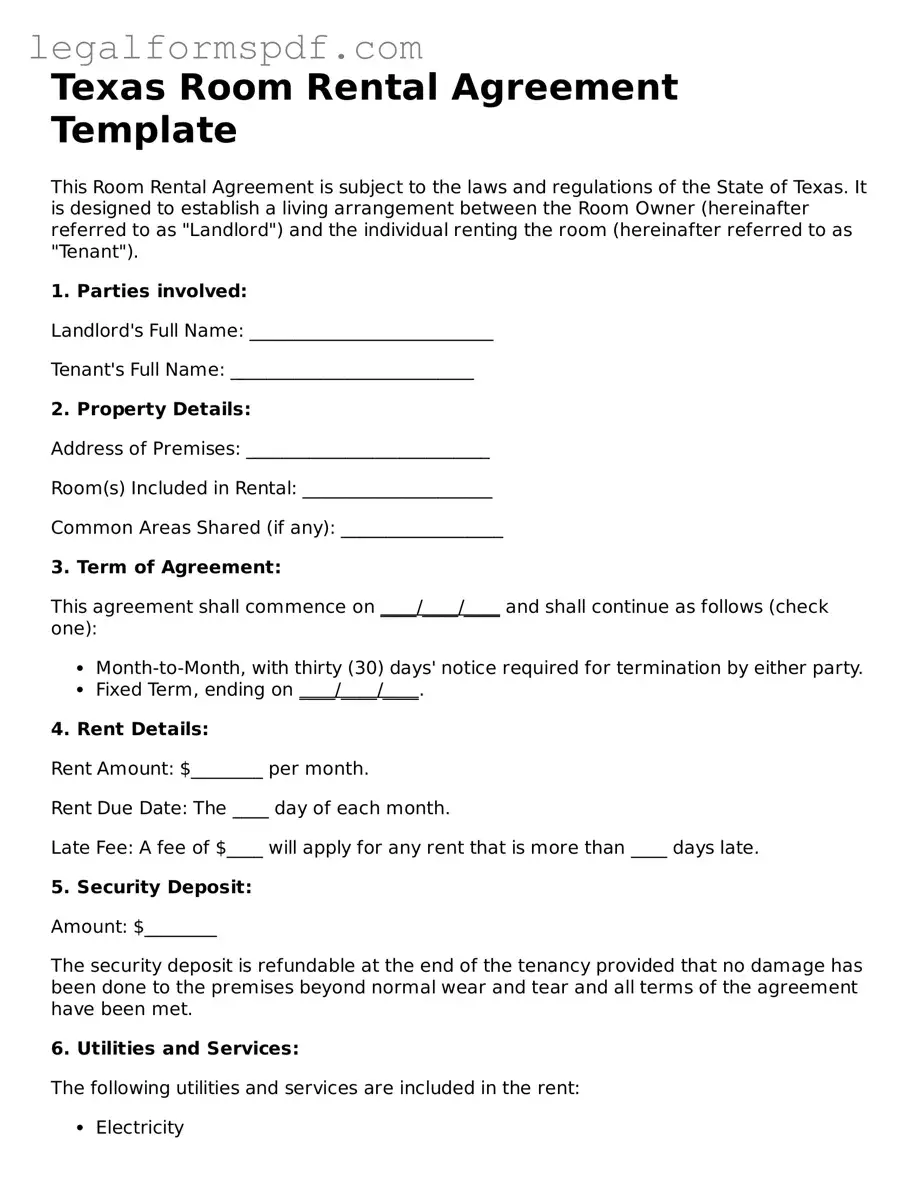What is a Texas Room Rental Agreement?
A Texas Room Rental Agreement is a legally binding document between a landlord and an individual renting a room within a larger property in Texas. This agreement outlines the terms and conditions related to the rental, such as rental amount, payment due dates, house rules, and the duration of the lease, ensuring that both parties understand their rights and responsibilities.
Who needs a Texas Room Rental Agreement?
Any landlord planning to rent out a room in their property located in Texas would need this agreement. Similarly, individuals looking to rent a room within a house or apartment in Texas should ensure that an agreement is in place to protect their rights as tenants.
What should be included in a Texas Room Rental Agreement?
Key elements to include are the names of the landlord and tenant, rental amount, security deposit details, payment schedules, house rules, conditions for termination, and signatures from both parties. Additionally, specifying the use of common areas and the allocation of utility expenses can help prevent misunderstandings.
Is a Texas Room Rental Agreement the same as a standard lease?
No, a room rental agreement specifically pertains to the rental of a single room within a property, rather than the entire property itself. It deals with unique considerations such as shared living spaces and often includes details on house rules, unlike standard leases.
Can a Texas Room Rental Agreement be modified?
Yes, both parties can agree to modify the agreement at any time. However, any changes should be made in writing and signed by both the landlord and the tenant to ensure that they are legally binding.
What happens if a tenant breaks the terms of a Texas Room Rental Agreement?
If a tenant violates the terms of the agreement, they can be subject to eviction according to Texas law. The specific consequences should be documented within the agreement. It's important for landlords to follow legal proceedings accurately to evict a tenant.
How long does a Texas Room Rental Agreement typically last?
These agreements can be either fixed-term, lasting a set period like one year, or month-to-month. The duration should be clearly stated in the agreement itself, along with provisions for renewal or termination.
Do I need a lawyer to create a Texas Room Rental Agreement?
While it's possible to create an agreement on your own, consulting with a legal professional can ensure that the document complies with Texas laws and fully protects your rights. This can be particularly important for addressing complex situations or if disputes arise.
How can conflicts arising from a Texas Room Rental Agreement be resolved?
Conflict resolution steps should be outlined in the agreement, including mediation or arbitration processes. If disputes cannot be resolved internally, the matter may need to be addressed in court. Having a detailed agreement can aid in these situations by providing a clear reference for the original understanding between landlord and tenant.
